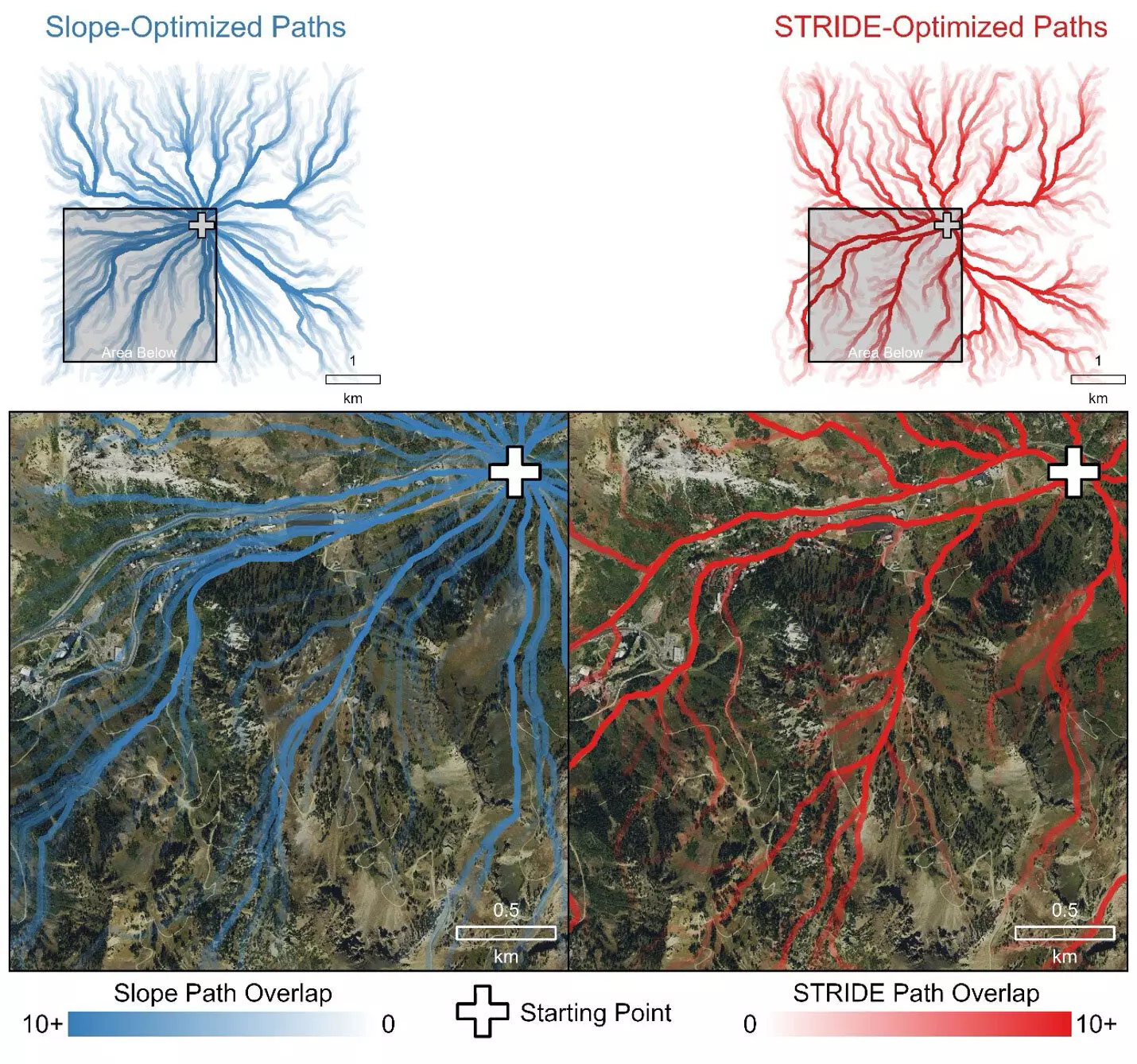Wildfires pose immense threats, necessitating swift and strategic responses from firefighters and emergency personnel. As flames engulf vast areas, the risk of unpredictable fire behavior compels these professionals to evacuate through pre-planned escape routes. The effectiveness of these routes relies heavily on accurate estimations of travel times, which can mean the difference between life and death. Yet, traditional methods have primarily focused on terrain slope, neglecting other critical factors like vegetation density and ground roughness. The introduction of the Simulating Travel Rates in Diverse Environments (STRIDE) model aims to revolutionize how emergency responders navigate various landscapes, ultimately enhancing safety for those battling the flames.
Historically, firefighters have had to rely on experience and subjective evaluations when determining the best escape routes during wildfires. The prevailing models, derived from slope measurements alone, often underestimate the complexity of actual terrain navigation. For instance, even though a steep path may appear daunting, it can be significantly quicker than trudging through a level area littered with boulders or dense underbrush. This oversight can lead to dire consequences; firefighters trapped by flames have faced tragic outcomes in past incidents. The inadequacy of slope-only models highlights the urgency for a more holistic approach to estimating travel times in dangerous environments.
In light of these challenges, researchers from the University of Utah have developed STRIDE, a groundbreaking model that integrates multiple terrain variables—vegetation density, ground surface roughness, and slope steepness. This innovative model leverages advanced airborne Light Detection and Ranging (LiDAR) technology to map the intricacies of a landscape, producing accurate predictions of travel times for individuals maneuvering through diverse environments. Mickey Campbell, the lead author of the study, emphasizes that the central question revolves around understanding mobility in emergency scenarios. “What is the most effective route, and how much time will it demand?” This critical inquiry underpins the motivations for creating STRIDE.
The development of STRIDE was grounded in rigorous field research, which involved analyzing LiDAR data and conducting practical trials. Researchers traversed various terrains to evaluate the model’s accuracy against historical travel time data collected from volunteers. By integrating human performance variability into their analysis, the authors honed in on crafting a model that not only accounts for steepness but also incorporates everyday decision-making in navigation. REAL-LIFE scenarios were conducted where volunteers walked across varying terrains to create a substantial database of travel time, enabling the researchers to formulate reliable predictions.
In a series of controlled experiments, STRIDE was pitted against traditional slope-only models. The results were striking—STRIDE showcased an uncanny ability to choose paths that mirrored human instincts. This behavior led it to favor established roads and trails, thereby enhancing the efficiency of travel rates. In contrast, the slope-only model often directed navigators toward treacherous terrains, ignoring off-path dangers often present in wildland environments. By bypassing risky areas, STRIDE significantly improved the likelihood of safe and timely evacuations.
While STRIDE primarily aims to enhance firefighter safety, its applications extend to various fields such as archaeology, outdoor recreation planning, and pedestrian mobility analysis. By democratizing access to this technology—making STRIDE publicly available—researchers envision a wide array of professionals leveraging its capabilities. The implications are far-reaching, emphasizing that the model’s accurate travel time estimates could enhance planning and decision-making across numerous disciplines.
As wildfires become increasingly prevalent amid climate change, ensuring the safety of those confronting these infernos is paramount. Models like STRIDE represent a significant advancement in understanding how terrain impacts mobility during emergencies. By systematically integrating multiple landscape factors, STRIDE offers a nuanced approach that fundamentally shifts how emergency services prepare for and respond to fires. This research serves a dual purpose—it not only saves lives but also informs better practices across various sectors reliant on efficient navigation in challenging environments. With continued advancements in technology and methodologies, the future of emergency response looks not only more precise but also far safer.


Leave a Reply